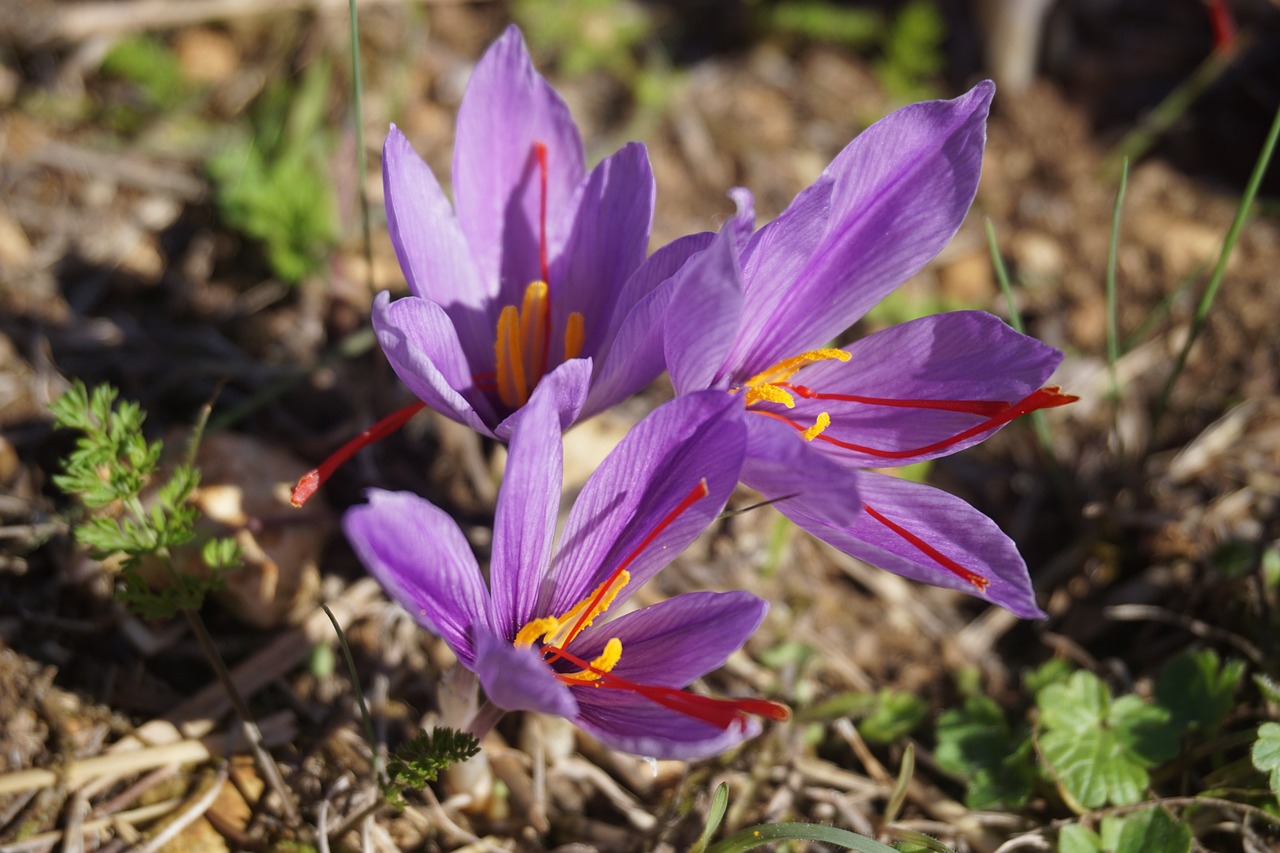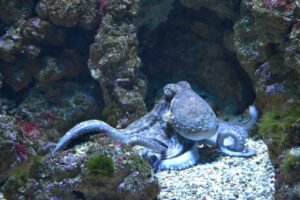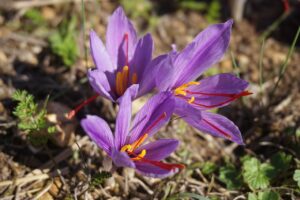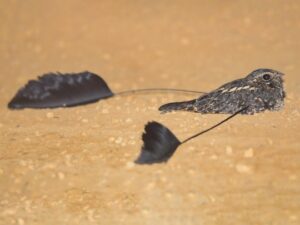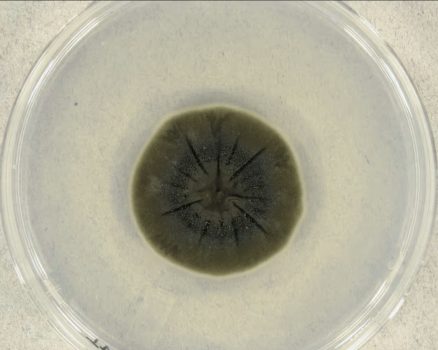 Pin
Pin Photo source: Internet web
In the aftermath of the 1986 Chernobyl disaster, scientists discovered something unexpected: a black fungus growing on the reactor walls. Identified as Cladosporium sphaerospermum, this organism not only survives but thrives in high-radiation environments.
What makes this fungus particularly intriguing is its ability to use radiation as an energy source, a process facilitated by melanin in its cell walls. This melanin absorbs harmful gamma rays and converts them into chemical energy, allowing the fungus to grow in conditions that are lethal to most life forms. This phenomenon, known as radiosynthesis, is akin to how plants use chlorophyll to harness sunlight.
The discovery of this black fungus that eats radiation challenges our understanding of life’s adaptability and opens new avenues for research into extremophiles—organisms that thrive in extreme conditions. The presence of such life forms in Chernobyl’s radioactive ruins suggests that life can adapt in ways previously thought impossible, offering insights into potential applications in bioremediation and even space exploration.
Table of Contents
How the Black Fungus Eats Radiation
The black fungus Cladosporium sphaerospermum thrives in the radioactive environment of Chernobyl’s Reactor 4, utilizing melanin to convert gamma radiation into chemical energy through a process known as radiosynthesis. This unique adaptation allows the fungus to grow in areas with high radiation levels, where most life forms cannot survive. The phenomenon of radiotropism, where the fungus grows towards radiation sources, further highlights its extraordinary capabilities.
The discovery of this black fungus that eats radiation has significant implications for science and technology. Researchers are exploring its potential applications in bioremediation, using the fungus to clean up radioactive waste, and in space exploration, where it could protect astronauts from cosmic radiation. The ability of Cladosporium sphaerospermum to harness radiation for energy challenges our understanding of life’s adaptability and opens new avenues for research into extremophiles and their potential uses.
Melanin’s Role in Radiation Absorption
Melanin, the pigment responsible for the dark coloration in fungi like Cladosporium sphaerospermum, plays a crucial role in their ability to absorb and utilize radiation. This pigment not only provides structural integrity but also enhances the fungi’s resistance to chemical and radiation stress. Studies have shown that melanin can absorb harmful gamma rays and convert them into chemical energy, a process that supports the growth of these fungi in high-radiation environments like Chernobyl. The presence of melanin in the cell walls of these fungi is associated with their improved health and fitness under extreme conditions, allowing them to thrive where most life forms cannot.
The unique properties of melanin in these fungi have significant implications for science and technology. Researchers are exploring the potential applications of melanized fungi in bioremediation, where they could be used to clean up radioactive waste. Additionally, the ability of these fungi to harness radiation for energy opens up possibilities for their use in space exploration, where they could protect astronauts from cosmic radiation. The study of melanin’s role in radiation absorption and energy conversion in fungi like Cladosporium sphaerospermum offers valuable insights into the adaptability of life and the potential for harnessing these mechanisms for human benefit.
Space Applications of Radiation-Absorbing Fungi
The extraordinary ability of Cladosporium sphaerospermum to absorb and utilize radiation has garnered significant interest in the field of space exploration. In experiments conducted aboard the International Space Station (ISS), this black fungus demonstrated a remarkable capacity to attenuate ionizing radiation. A study published in Frontiers in Microbiology reported that a thin layer of C. sphaerospermum reduced radiation levels by approximately 2% over a 30-day period, suggesting its potential as a natural radiation shield in space environments.
Beyond its shielding capabilities, the fungus’s resilience in microgravity and high-radiation conditions makes it a promising candidate for long-duration space missions. Its ability to thrive in such extreme environments could be harnessed to develop self-replicating, living materials that provide both protection and sustainability for astronauts on missions to Mars and beyond. The integration of radiation-absorbing fungi into spacecraft design represents a novel approach to mitigating the risks associated with cosmic radiation, potentially revolutionizing the way we approach human space travel.
Bioremediation Potential of Radiation-Absorbing Fungi
The unique ability of Cladosporium sphaerospermum to absorb and utilize radiation has significant implications for bioremediation efforts, particularly in environments contaminated with radioactive materials. This black fungus, discovered thriving in the highly radioactive zones of Chernobyl, employs melanin to convert gamma radiation into chemical energy, allowing it to grow in conditions that are lethal to most life forms.
Researchers are exploring the potential applications of this fungus in cleaning up radioactive waste sites. By harnessing its natural ability to absorb radiation, C. sphaerospermum could be used to reduce radiation levels in contaminated areas, making them safer for humans and wildlife. This approach offers a biological solution to a problem that has traditionally relied on physical and chemical methods, which can be costly and environmentally damaging. The use of radiation-absorbing fungi in bioremediation represents a promising avenue for addressing the challenges of radioactive contamination in a sustainable and eco-friendly manner.
Evolutionary Origins of Radiation-Absorbing Fungi
The remarkable ability of Cladosporium sphaerospermum to absorb and utilize radiation is not a recent adaptation but likely the result of millions of years of evolution. These fungi may have developed their radiation resistance in environments with naturally high radiation levels, such as uranium-rich caves and deep underground rock formations. Over time, the presence of melanin in their cell walls, initially serving as protection against ultraviolet radiation, may have evolved to play a more active role in energy conversion, allowing these fungi to harness ionizing radiation for growth.
The Chernobyl disaster provided an extreme environment where these pre-adapted fungi could thrive without competition from other organisms. The absence of other life forms in the highly radioactive exclusion zone allowed radiation-absorbing fungi to proliferate, demonstrating nature’s ability to adapt and survive in the most hostile conditions. This evolutionary perspective not only enhances our understanding of extremophiles but also opens up possibilities for discovering similar organisms in other extreme environments, potentially even on other planets.
Scientific Investigations into Radiation-Absorbing Fungi
The discovery of Cladosporium sphaerospermum thriving in the radioactive environment of Chernobyl has spurred extensive scientific research into its unique properties. Researchers have been particularly interested in understanding how this black fungus utilizes melanin to convert gamma radiation into chemical energy, a process known as radiosynthesis. Studies have shown that exposure to ionizing radiation enhances the growth of melanized fungi, suggesting that melanin plays a crucial role in their ability to harness radiation for energy.
Experiments conducted aboard the International Space Station (ISS) have further demonstrated the potential of C. sphaerospermum in space applications. A study published in Frontiers in Microbiology reported that a thin layer of this fungus reduced radiation levels by approximately 2% over a 30-day period, indicating its potential as a natural radiation shield in space environments. These findings have significant implications for the development of sustainable radiation protection strategies for astronauts on long-duration space missions.
Could Radiation-Eating Fungi Redefine Life’s Limits?
The existence of a black fungus that eats radiation is a wake-up call for how little we truly understand the boundaries of life. Cladosporium sphaerospermum doesn’t just tolerate radiation—it thrives on it, using a process that’s still not fully understood. If life can adapt to feed on radiation, one of the most destructive forces known to biology, then the classic rules of survivability may be far too narrow. The standard definition of what a “habitable” environment looks like is already being rewritten. Scientists are now asking whether similar organisms could survive in high-radiation zones outside of Earth—on Mars, Europa, or even in deep space.
This single discovery has fueled a new branch of astrobiology focused on “radiontrophs”—life forms that feed on radiation. While it might sound like science fiction, labs around the world are racing to understand the molecular mechanics of how melanin converts radiation into usable energy. The implications stretch far beyond Chernobyl, reaching into the future of energy, medicine, and life in extreme places—both on Earth and beyond.
Challenges and Mysteries Scientists Face
Despite the fascinating discovery of black fungus that eats radiation, many questions remain unanswered. How exactly does the melanin convert harmful radiation into energy? Why do these fungi grow toward radiation sources, a behavior called radiotropism? And are there limits to this process, or could the fungi adapt to even stronger radiation?
Scientists are working to isolate the precise biochemical pathways involved, but the complexity of melanin and its interaction with radiation is difficult to replicate in a lab. Additionally, the long-term effects of radiation consumption on the fungus’s DNA and metabolism remain unclear. Understanding these mysteries is key to unlocking practical uses for this fungus, like bioremediation or space travel shielding, but it also challenges current biological theories about life’s resilience in extreme environments.
The Ecological Impact of Radiation-Absorbing Fungi in Chernobyl
The black fungus that eats radiation doesn’t just survive in Chernobyl’s exclusion zone—it actively shapes its unique ecosystem. By absorbing radiation, Cladosporium sphaerospermum may help reduce the overall radiation levels in its immediate surroundings, creating microhabitats where other life forms can gradually return. This slow but steady change could be a key factor in the partial recovery of plants, insects, and small animals in the area over the past decades.
Moreover, the fungus’s presence influences the microbial community dynamics in this radioactive wasteland. It competes with other microbes and molds, potentially controlling populations that could be harmful or less adapted to radiation. This balancing act contributes to a fragile but evolving ecosystem where life finds a way to persist despite extreme conditions. Understanding this ecological role deepens our appreciation of how organisms adapt and cooperate in environments once thought completely hostile.
FAQs
It’s a fungus called Cladosporium sphaerospermum that thrives in highly radioactive environments like Chernobyl. It uses melanin to absorb and convert radiation into energy, allowing it to grow where most life cannot.
The fungus contains melanin, a pigment that can absorb gamma radiation and convert it into chemical energy through a process called radiosynthesis. This is similar to how plants use sunlight in photosynthesis.
Scientists first found this black fungus growing inside the damaged Reactor 4 at the Chernobyl Nuclear Power Plant, one of the most radioactive places on Earth.
Researchers are exploring its use in cleaning up radioactive waste (bioremediation) and in protecting astronauts from cosmic radiation during space missions.
Currently, Cladosporium sphaerospermum is not known to be harmful to humans. It primarily thrives in extreme environments and poses no direct health risks under normal conditions.



